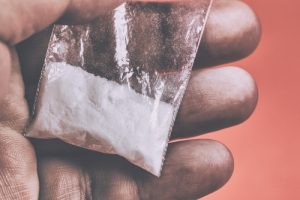What Is Cocaine Made From? Main Ingredients & Cocaine Cutting Agents
Cocaine is a powerful stimulant derived from the leaves of the coca plant, which is native to South America. The drug was originally used as an anesthetic and to constrict blood vessels. Even though its addictive properties began to be recognized by the late 1800s, it is still used as an anesthetic today.1
Cocaine is one of the oldest drugs known to man. In fact, according to National Geographic, people in South America have cultivated the plant from which cocaine is produced for about 8,000 years.2
How Is Cocaine Made?

Cocaine is made from the leaves of the coca plant. This plant grows in South America in places like Colombia, Peru, and Bolivia.3
How powdered cocaine is made:3
- The leaves are soaked, filtered, and dried.
- The powder gets mixed with solvents.
- It then gets pressed and heated.
To make crack cocaine, cocaine hydrochloride is dissolved into a mixture. The solution is heated until the cocaine forms an oily substance that settles at the bottom of the container. Excess water and other impurities are then removed. The resulting substance is crack cocaine. 3
Where Does Cocaine Come From?
Colombia is the largest grower of the coca bush.
Coca bush cultivation peaked in 2000 and then declined over the next 13 years. However, it increased 76% between 2013 and 2016. That year, the global area under coca bush cultivation was 213,000 hectares. Colombia accounted for 68.5% of that area, Peru accounted for 21%, and Bolivia accounted for 10%. The amount of cocaine produced in 2016 was 1,410 tons, a 25% increase from the previous year. 6

The Drug Enforcement Administration reports that Colombia is the main source for cocaine seized in the United States. In 2016, approximately 92% of cocaine samples seized in the U.S. were from Colombia, 6% were from Peru, and 2% were of unknown origin. This suggests that the majority of cocaine used in the U.S. comes from Colombia.7
Are There Uses for the Coca Plant Other Than Producing Cocaine?
Indigenous peoples in South America use the coca leaves to relieve a number of ailments, including upset stomach, nausea, altitude sickness, coldness, and hunger.8
Coca leaves include calories, carbohydrates, minerals, and vitamins that also make them a possible source of energy and nutrients for users. 8
When Did They Stop Putting Cocaine in Coca-Cola?
Coca-Cola originally contained cocaine, but it was phased out beginning in 1903. However, it still contains non-narcotic coca leaf extract for flavoring.9
As mentioned above, cocaine is also still used as an anesthetic.1
What Adulterants Are Used in Cocaine, and What Are Their Effects?
Pure cocaine is expensive, and dealers often want to stretch a batch so they can make more money. As a result, they often mix the powder with other substances. According to the National Institute on Drug Abuse, common diluting agents include cornstarch, talcum powder, baking soda, or flour.4
Dealers also often cut their supply of cocaine with substances to enhance the effects of the cocaine, such as:10
- Caffeine, which can create similar but weaker effects to cocaine.
- Lidocaine, which is prescribed to treat heart arrhythmias. When mixed with cocaine, the drug enhances cocaine’s numbing effects, but it can lead to heart problems and overdose, and it increases the toxicity of cocaine.
- Procaine, which is a local anesthetic that has similar effects to cocaine. It can cause nausea, vomiting, tremors, and dizziness.
- Levamisole, which is an animal dewormer that was originally used to treat a similar condition in humans and may be used by dealers to give the cocaine a more intense high. However, it can lead to fever and blood disorders and is highly toxic.
- Mannitol, which is a prescription diuretic that can also be used to diagnose asthma and help treat glaucoma. It is mainly used to add bulk and has little risk of health effects beyond nasal irritation.

Increasingly, dealers have also cut cocaine with fentanyl, an extremely powerful opioid. This has led to a number of overdose deaths. In New York, 37% of overdose deaths involved cocaine and fentanyl without heroin in 2016, up from 11% in 2015.5
It is virtually impossible for a recreational user to tell the difference between cocaine cut with other ingredients and pure cocaine. Even experienced buyers may not be able to tell the difference.
Treatment for Cocaine Addiction
Treatment can help people with cocaine addictions avoid health effects and possible overdose. Counselors and treatment providers can help users work through their reasons for using cocaine and find ways to manage their triggers and cravings.
Desert Hope’s exceptional co-occurring disorder programs integrate treatment for addiction with care for other mental health disorders that often accompany addiction, such as depression or anxiety. There are many levels of treatment available to get started in recovery including inpatient treatment for cocaine addiction, outpatient services, and sober living. Call us today at to start addiction treatment, learn about cocaine addiction rehab in Las Vegas, how to use insurance to cover rehab, and other payment options.
Verify your insurance now using the confidential .